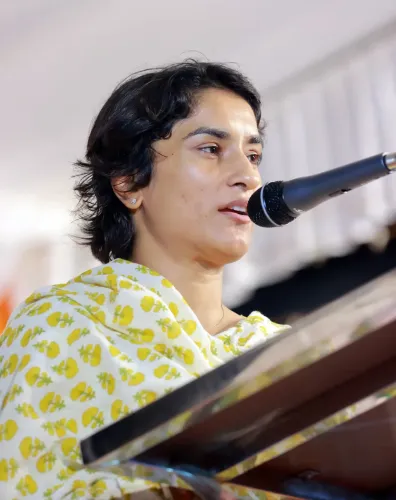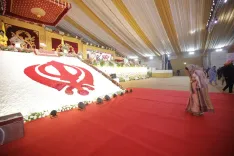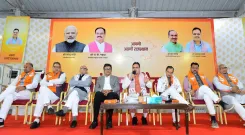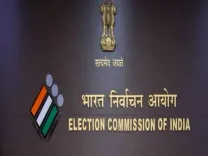Is Bhiwadi One of India's Most Polluted Cities After Diwali?

Synopsis
Key Takeaways
- Bhiwadi has the highest AQI in India post-Diwali at 338.
- Other cities like Dholpur, Ajmer, and Alwar are also facing poor air quality.
- Residents are advised to take precautions, especially those with respiratory conditions.
- The rise in pollution is due to firecracker emissions and weather conditions.
- Immediate action is needed to improve air quality.
Jaipur, Oct 21 (NationPress) A day post-Diwali celebrations, the air quality in Rajasthan sharply declined on Tuesday, with Bhiwadi (Khairthal-Tijara) emerging as one of the top 10 most polluted cities in India. The city's Air Quality Index (AQI) soared past 338, placing it firmly in the red zone.
Other cities like Jaipur, Ajmer, Alwar, and Dholpur also reported severe to poor air quality, with AQI levels exceeding 200.
Medical professionals have urged residents, especially those with asthma or respiratory conditions, to take necessary precautions as pollution levels surge.
On Monday, AQI levels in various regions of the state ranged between 130 and 170. By Tuesday, those levels escalated beyond 200, indicating a significant post-festivity increase. Bhiwadi, which is part of the National Capital Region and a crucial industrial hub, recorded the highest AQI at 338.
Other cities reported alarming figures, such as Dholpur with an AQI of 264, Ajmer at 239, Alwar at 218, Bharatpur at 242, Churu at 21, and Jodhpur above 250 AQI.
In Jaipur, Shastri Nagar was the most polluted area. All monitoring sites in the state capital reported AQI levels above 200. Shastri Nagar and Vidyadhar Nagar registered 287 AQI, while Sitapura, Pratap Nagar, and Jagatpura recorded 275 AQI. Adarsh Nagar and Rajapark had 256, and MI Road and Chardiwari recorded an AQI of 238. Even on Monday, these areas showed moderate to poor air quality, which deteriorated post-festival.
Environmental experts suggest that cloudiness and a lack of wind have trapped pollutants near the surface.
The smoke and fine dust from firecrackers, vehicles, and industrial emissions remain suspended in the lower atmosphere due to limited air movement and dense cloud cover.
In terms of AQI in key cities, Bhiwadi had 289 AQI on October 20, which rose to 338 on October 21; Dholpur went from 245 AQI on October 20 to 264 AQI on October 21; Ajmer's AQI increased from 124 on October 20 to 239 on October 21; Alwar's AQI rose from 125 to 218; Bharatpur's AQI went from 115 to 242; and Churu's AQI increased from 166 to 219 on Tuesday. Jodhpur's AQI surpassed 250.
Experts caution that this situation may persist for several days unless wind speeds increase or rain helps disperse the pollutants.









